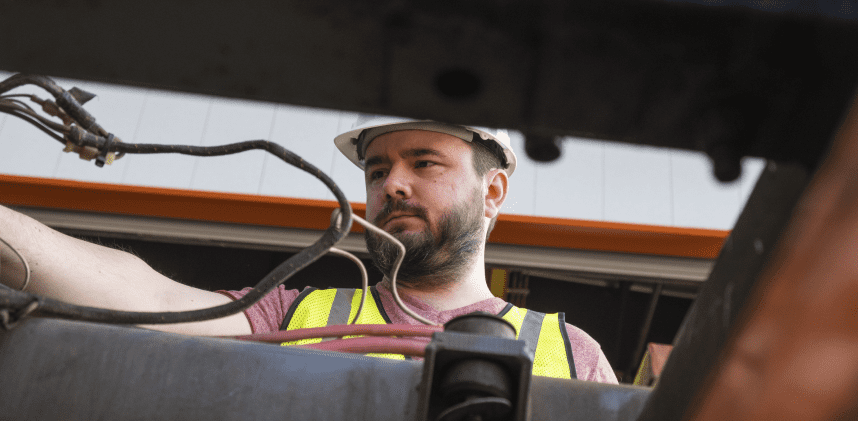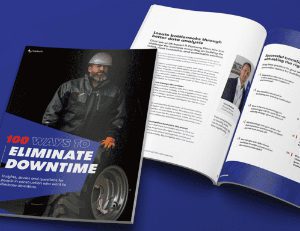Telematics — the technology combining telecommunications and informatics — is taking over the construction industry and transforming fleet management.
Instead of manual communication data collection methods, companies can make use of real-time data sets and clear communication streams that increase productivity, reduce costs, and prioritize operator safety and machine health.
If your company is installing telematics for your construction and off-road fleet, then this article will give you a generalized idea of how it’s done. Let’s look at some of the benefits of telematics and how to install it in your fleet.
What is telematics?
Telematics is a system that supports fleet managers in managing and monitoring their construction and off-road vehicles. It uses real-time data to help teams locate equipment and stay ahead of maintenance schedules.
Supported by a centralized platform, telematics is the optimal tool businesses can use to foster collaboration and open communication between managers and fleet operators. Frequent updates keep all team members in the loop, instilling confidence that the necessary personnel will address any issues that arise.
Analysis of vehicle location, status, fuel consumption, and maintenance requirements provides invaluable data that enables businesses to make informed decisions. Telematics focuses on efficiency, productivity, and cost reduction – driving significant returns for construction and rental companies alike.
What are the benefits of telematics?
Before we discuss how to install telematics, let’s quickly look at a few benefits of these systems for construction and off-road vehicle companies.
- Safety and security: Many telematics systems send notifications when machines enter and leave job site zones, ensuring enhanced asset security. Fleet managers can designate zones for their vehicles to be in, such as rental depots or job sites helping to minimize theft and damage.
- Efficiency: Fleet managers are notified about upcoming equipment maintenance so vehicles can always remain in commission. Also real-time data insights from the job site help managers resolve issues quickly and seamlessly.
- Location tracking: Tracking allows fleet managers to stay aware of where all their machines are at all times, even across multiple job site locations.
- Saving money: Besides monitoring fuel consumption, fleet managers can analyze the trends that lead to reduced gas usage, including optimized routes and fuel-efficient habits. Preventive maintenance also helps reduce expenses and costly repairs.
Now that we understand the benefits of telematics systems, let’s dive into how to install them so you can integrate them into your construction business.
Process for installing telematics
Let’s discuss all the necessary steps for installing telematics.
Pre-installation
Before the installation begins, don’t skip the following steps:
- Map out your fleet and business goals: One of the most crucial steps before installing telematics is understanding what the company needs and wants to improve upon. For example, telematics is the right technology for construction businesses looking for a service that will provide usage insights, engine diagnostics, and easy location-tracking.
- Select the telematics solution that suits your business: Research, research, research. Before installing a telematics system, understand what features each service provider is offering and consider the cost.
Time to install
There are two methods of installation you can consider for your business.
- Professional: Look for a service that will install your telematics system. While it may cost you more to have it professionally installed, this will ultimately increase the efficiency of installation and lower repair and potential damage costs in the long run. With professional installation you can guarantee the correct installation of the device the first time.
- In-house installation: Installing a telematics system in-house isn’t easy and comes with risks. Read the manufacturer’s instructions carefully if you choose this option. For complex installations and larger fleets, we recommend calling a professional.
Installation process
Here’s how to install a telematics system.
- Identifying where to install: Installers will select the location of the telematics device on an operational construction or off-fleet vehicle.
The device should not obstruct the driver’s/operator’s view or interfere with other vehicle functions. Ideally this will be the location where it can receive signals the best. Additionally, this will also be a spot where it’s protected from damage, harsh construction environments.
- Wiring and connectivity: The installer will ensure that any necessary wiring or wireless connections are made and working correctly. Some devices may be directly connected to the power source on the vehicle, whereas others operate on bluetooth or wireless connection.
- Mounting: Install the telematics device; then, it is time to mount it. It is vital to ensure that the device is stable and able to withstand the vehicle’s movement on the job site. Communicate with your installer to ensure this.
- Testing for functionality: Once the device is installed correctly, the installer will check that all features of the device are functioning properly and in sync with the software. Some companies even offer a product demo. At this stage, make sure the software and technology works well for your business.
Training
After installation, get your staff on board to help them learn how to use the new technology effectively.
- Operator training: First, fleet operators must be in the loop with the purpose and benefits of the new telematics system. Break down the details of using the telematics system and how it will help make their job easier.
- Train fleet managers: Fleet managers should know how to collect and analyze data to help them better manage the company fleet. Show them how to interpret the data insights for better job site performance.
- Ongoing learning: With new technology, learning is constant and communication is key. Keep your team up-to-date on any new updates and features.
Observation
Ongoing monitoring and optimization should be a part of using telematics.
- Data analysis: Regularly analyzing data and identifying trends and opportunities will help keep the system up to date and help the company save money and increase performance in the short- and long term.
- Performance review: Review operational and driver performance using long-term data trends. The analysis will also help to improve efficiency, decrease fuel consumption, update vehicle maintenance schedules, and improve job site safety.
Final thoughts
Installing telematics as part of your fleet management plan and strategy will optimize performance, reduce costs, and improve operator safety. Proper installation, accompanied by thorough training, will ensure that all team members are on board and ready to put it to use.
Continual training and monitoring will ensure that companies can access the full features of this telematics technology, enjoying both short- and long-term benefits.
Request a demo to explore the benefits of telematics for your construction or rental company.




